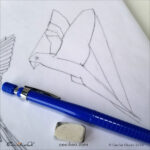Many divers wonder about the safety of flying after scuba diving. It’s a valid concern, as changes in altitude affect pressure, which is crucial in managing nitrogen levels in your body after a dive. This article explains why flying after a shallow scuba dive, like one to 20 feet of seawater (fsw), is generally considered low risk.
The Science of Pressure Changes
When you scuba dive, the pressure around you increases. At 20 fsw, you experience 1.61 atmospheres absolute (ATA). Conversely, when you fly in a commercial airplane, the cabin pressure is typically around 8,000 feet above sea level, which is about 0.74 ATA. The difference in pressure between being at 20 fsw and airplane cabin pressure is a change of 0.87 ATA. This pressure change is what drives offgassing of nitrogen from your tissues.
Comparing Dive Depth and Altitude
The pressure change experienced when flying after a 20 fsw dive is actually similar to surfacing from a slightly deeper dive. In fact, it’s equivalent to a direct ascent from a 29 fsw dive back to the surface. If you consult no-decompression dive tables for 30 fsw, you’ll find no limit to your bottom time. This is because the pressure gradient from such a shallow dive is not typically sufficient to cause decompression sickness (DCS).
Deeper Dives and Safety Margins
M-values, used in decompression models like Buhlmann ZH-L16, represent the maximum tolerated pressure gradient before DCS risk increases. The lowest M-value in the ZH-L16 model is 41.8 fsw for the slowest tissue compartment (635 minutes). This suggests that even if fully saturated in all tissues, surfacing directly from 42 fsw might not cause DCS for most individuals. Considering the pressure reduction during flight (equivalent to about 9 fsw), this implies that diving to around 33 fsw indefinitely and then flying would still carry a low DCS risk, according to these theoretical models.
Conclusion
While these calculations and models provide a basis for understanding the low risk associated with flying after shallow dives, individual physiology can vary. The experimental basis of these values means real-world experiences might differ. However, for typical recreational dives to 20 fsw, the pressure changes experienced during flight are generally considered safe. Always prioritize safe diving practices and consider personal factors and dive profiles when planning post-dive activities involving altitude changes.
